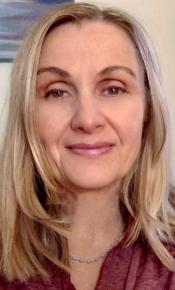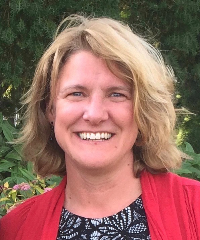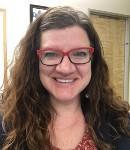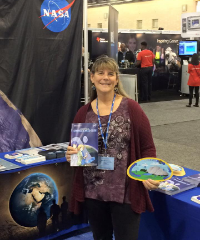Community Blogs
Community Blogs
Discover how the GLOBE community is engaging in all things GLOBE through the community blog posts below.
Learn how to create a GLOBE community blog post.
Filter By:
Blogs List
El Niño Field Campaign members, teachers, students, and campaign team at the 20th GLOBE Annual Meeting in Estes Park, Colorado 16-21 July 2016! Keep up the awesome work!
Read More »
Posted in:
Hello again! Our GLOBE Technology Working Group is meeting again. This annual meeting is in Estes Park, CO. A great get together with members, students, trainers and country coordinators from around the world (GLOBE)!
Here is a spherical panorama of our working group doing the important business of reviewing all our recent work, etc.
GLOBE annual meeting (Estes Park, CO), Technology Working Group break out session. Discussing annual progress and challenges. - Spherical Image - RICOH THETA
Posted in:
GLOBE Working Groups:
TECHNOLOGY WORKING GROUP
See the latest and greatest satellite imagery of our current El Niño leading up to a potential La Niña!
See more HERE!
Posted in:
GLOBE friends,
The Annual Meeting in Colorado is only a few days away! We -the members of the Evaluation Working Group- are really excited about having the opportunity to meet in person again and about having the chance to interact with all of you.
Join us for our presentations to see what we have worked on for the past year. Our efforts will be much more targeted and much more effective if you share with us your experience of using GLOBE with your students. We would like to know your success stories, your challenges, your concerns and your suggestions.
At ...
Posted in:
GLOBE Working Groups:
EVALUATION WORKING GROUP
Have you ever wondered why you need to take so much data via the GLOBE Protocols?
Are you part of the GLOBE El Niño Campaign.
This articled entitled, "El Niño is over, and nearly all the forecasts got it wrong", really hits home with the idea that a global event like El Niño is so unpredictable. So many parts of the environment are being affected it is really hard to predict how each environment will respond to the changes an El Niño event can bring.
Read the article HERE!
Posted in:
If you clicked on a link to this page due to some intriguing headline, I hope you will not be too disappointed. A momentary lapse in judgement inspired me to ask the GLOBE Implementation Office (GIO) for a Blog tab and now that it is here; it’s been waiting for some content.
My intent was to fill this with guest bloggers, U.S. teachers in particular, writing about how they are implementing GLOBE in their classrooms. There weren’t any volunteers. [sad face]
Until I can entice a couple of GLOBE teachers, you get me, Jen Bourgeault. I have had the pleasure and honor of being the U.S. ...
Posted in:
Guest Blogger: Pat Benner from Somerset County Schools, Maryland and her students.
Sixth grade students at Somerset Intermediate School on the Eastern Shore of Maryland are currently studying weather, climate, and human impacts on Earth systems, synthesizing our year-long study of Earth science. We monitored and measured weather conditions daily for five weeks as we researched and analyzed the factors that influence weather phenomena. After identifying trends and cause effect relationships, we graphed ...
Posted in:
The 2015-2016 El Niño Event - Tuesday May 17th, 2016 8:00 pm EDT (12:00 am May 18th UTC)
In this hour-long webinar, Dr. William Patzert , a scientist at NASA's Jet Propulsion Laboratory, will share the current state of the 2015-2016 El Niño event, and will discuss whether this El Niño matched the predictions for how global weather patterns would be impacted. Participants will also learn how to use the GLOBE data visualization tools to compare and contrast the El Niño Student field campaign variables from schools around the world from David Overoye ...
Posted in:
Bird Beaks and What they Eat
Overview:
Students identify ideal beak shape for food.
Age:
Upper primary (4th and 5th graders) assisted 1st graders
Materials:
Bird beak/food handout
Straws
Dixie cups
Juice
Tweezers
Bowls
Wild grain rice
Slotted spoons
Cooked noodles (macaroni or similarly shaped)
Chopsticks
Gummy bears
White rice
Scissors
Marshmallows (jumbo)
Plan:
Ask students why birds have beaks and what they are used for - allow time for discussion. Read a book about beaks to the group. I used ...
Posted in:
Curriculum:
SCIENCE AND MATH
GLOBE Science Topics:
GENERAL SCIENCE
Learning Activities:
LAND COVER/BIOLOGY
Primary Audience:
TEACHERS
STUDENTS
"The global weather pattern that has been affecting the United States over the last 9 months is coming to an end, and now its sister is likely to take hold."
Check out this recent article - http://www.fox9.com/news/135728044-story
Posted in:
Click on the link forwarded by Dr.Tim Schmit (GOES-R PI) to view some amazing imagery!
http://cimss.ssec.wisc.edu/ goes/blog/archives/category/goes-14
Posted in:
Looking for collaborators on the GOES-R Weather Watchers Project. Let's bring the satellite and STEM education community together!
Posted in:
Our swim off the shore of the Antarctic continent was coined as the “polar plunge.” Plunge is a verb meaning “to jump quickly and energetically.” I did just that – the quicker I got in, the sooner I could get right back out!
I plunged holding a bucket to collect the day’s water sample from Neko Harbor.
Since I had jumped into the Arctic’s water last June ( read here ), I was confident I could do this. I knew just what to expect: frigid water cold enough to feel like a million needles. Probably overconfident from the excitement, the ...
Posted in:
The third and fourth grade students whom I work with at Cedar Grove ES asked me what will happen once the El Nino conditions begin to subside, and I admitted that I really wasn't sure. So, we used the internet and looked it up! We found a website that answered our question! Discovery News has a great article with videos and graphics at http://news.discovery.com/earth/weather-extreme-events/will-la-nina-follow-one-of-the-strongest-ever-el-ninos-160410.htm .
This article suggests that this strong El Nino season may be followed by a La Nina event. Like all good ...
Posted in:
Dorian Janney, GLOBE Scientist Mentor Blog for El Nino Field Campaign
I have had the pleasure of working with two groups of elementary school students this year as their GLOBE mentor. They attend Cedar Grove Elementary School in Clarksburg, MD. My primary goal was to install an instrument box with a rain gauge and a multi-day thermometer at their school, and to help them collect and report data to GLOBE. Here they are collecting data:
As we observed the weather patterns, they began to ask what the difference was between weather and climate. I gave ...
Posted in:
Water Availability can be defined as "The hydrologic capacity of a water source (surface water body, groundwater, municipal water) to sustain additional water demands after considering other current water uses and water conditions. (GEMI, 2012)
The Soil Moisture Active Passive Mission provides information on water availability and environmental stress for estimating plant productivity and potential yield. The availability of direct observations of soil moisture status and the timing and extent of potential frost damage from SMAP enables significant improvements in operational crop ...
Posted in:
Field Campaigns:
SMAP
Primary Audience:
TRAINERS
STUDENTS
TEACHERS
PARTNERS
SCIENTISTS
ALUMNI
COUNTRY COORDINATORS
Penguins have the right of way at land and sea! The first thing I noticed when we landed at Peterman Island (off the west coast of the Antarctic Peninsula) was long sled tracks down the hillside.
As I walked to take a closer look, I had to wait for a fearless gentoo penguin to cross the path in front of me, since penguins have the right of way!
Winter childhood memories of sledding with my brothers in Ohio, USA flooded my heart when I then saw several penguins tobogganing, sliding down ...
Posted in:
In the midst of a very up and down El Niño season, have you ever wondered: are all El Niños the same? For the answer to that question, we need to compare data imagery from two separate El Niño events. And what better way to do that then with global observations from space. One place to find what we’re looking for is the Center for Climate Sciences, El Niño page.
http://climatesciences.jpl.nasa.gov/enso
Here scientists compare multiple datasets from the largest El Niño on record, 1997-1998, with the current 2015-2016 El Niño season. Some of the datasets show what are called ...
Posted in:
What do students in Lima Peru and Ida Michigan have in common? The answer is quite simple, the dramatic effects of this year’s El Niño. Thanks in part to The GLOBE Program’s worldwide reach in connecting schools with one another; mentorship from Dr. Kevin Czajkowski from the University of Toledo and the inquisitive nature of students from Ida Middle School.
Students from Mrs. Lanna Harmon’s 6 th grade class of Ida Middle School in Ida Michigan reached out to work with students from ESD Coordinator Mrs. Milagros Gallegos’s 7 th grade ESD Club from Colegio Altair School in Lima, Peru. ...
Posted in:
Our zodiac landed on a flat volcanic beach to an unexpected sight. Gentoo penguins and Antarctic fur seals were everywhere!
The abandoned buildings proved we were not the first people these animals shared a beach with. Dozens of seals and penguins seemed unaware of the law, the Antarctic Treaty, to keep a minimum of 5 meters from humans.
I was first introduced to the International Antarctic Treaty when I asked my ...
Posted in:
—
20 Items per Page














